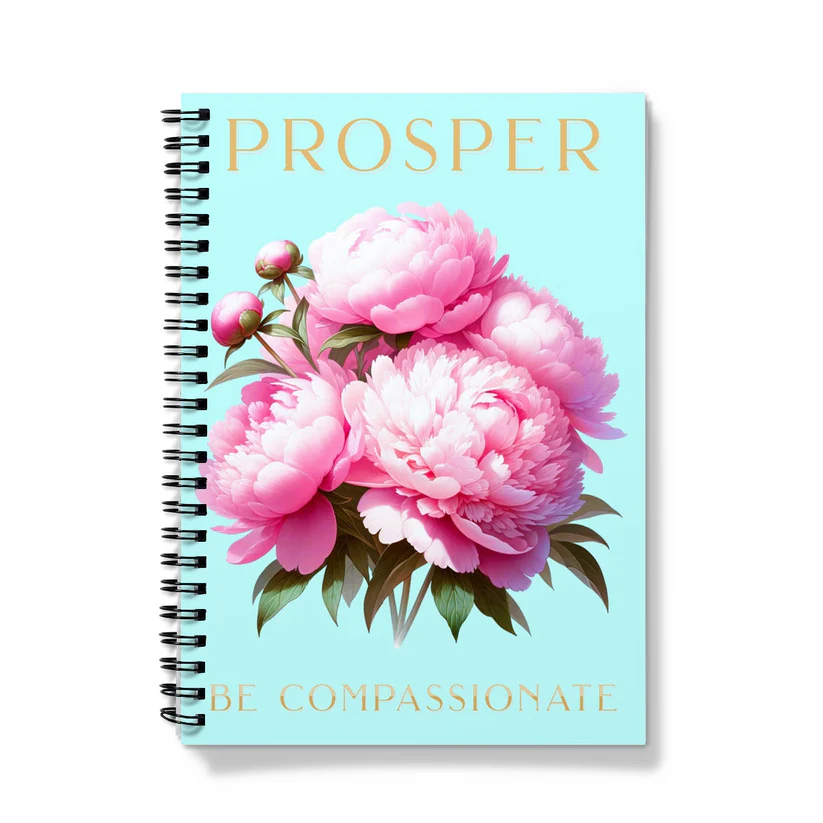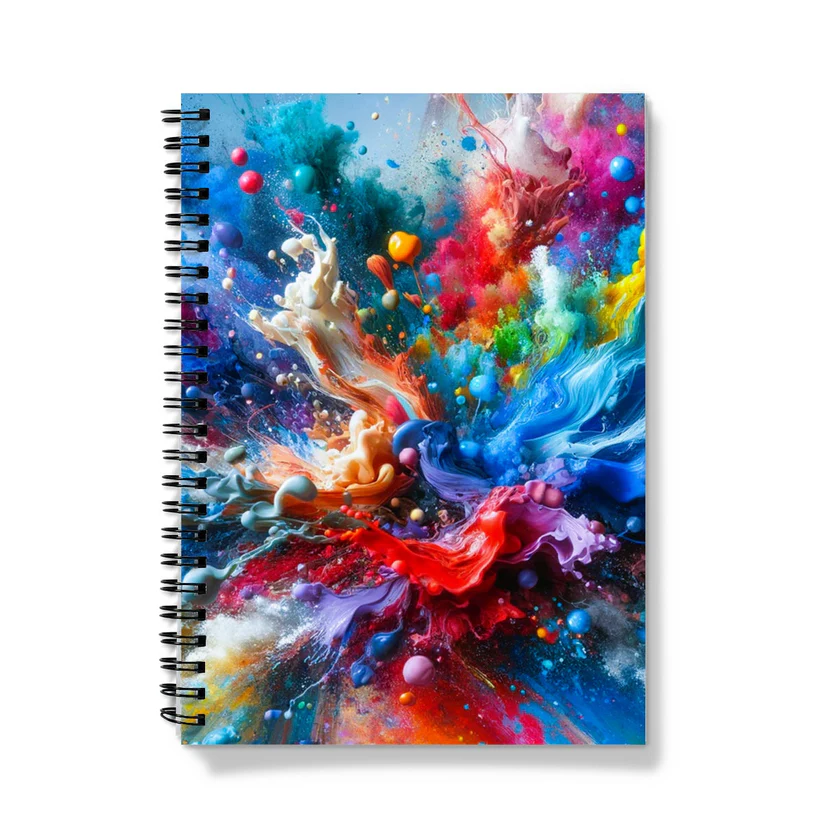5 Creative Ways to Use Your Notebook for Business Planning
A well-organised notebook can be a powerful tool in your business planning arsenal, helping you streamline operations, set achievable goals, and keep track of your financial health in style.

Introduction: Harnessing the Power of Notebooks for Business Planning
Are you looking for a straightforward yet effective way to enhance your business planning? Let’s talk about the humble notebook—a powerful tool that often goes overlooked in the digital age.
Using a notebook for your business activities helps in organising thoughts and tasks, and significantly increases your productivity.
The Importance of Notebooks in Business Planning
Keeping Track with a Personal Touch
- Tangible Planning: There’s something immensely satisfying about physically writing down your plans. It engages your brain differently than digital tools, aiding in memory retention and clarity of thought.
- Easy Access and Reliability: Unlike digital devices, notebooks don’t run out of battery or require an internet connection. They’re available at all times for jotting down ideas, making them incredibly reliable for spontaneous thoughts or important notes.
Motivation and Clarity
- Visually Appealing Tools: A beautifully designed notebook isn’t just a pleasure to use; it can actually motivate you to plan more diligently. The aesthetic appeal of your notebook can inspire you to open it more often, making planning a regular part of your day.
- Clarity in Planning: Writing in a notebook helps to declutter your mind by transferring thoughts onto paper. This process can provide clarity, helping you to focus on setting precise and achievable goals.
Incorporating a notebook into your business planning routine offers a unique blend of practicality and personal expression.
You can use it as a tool for organisation and a reservoir of inspiration and motivation. So, whether you’re sketching out your next big idea or outlining the steps to achieve your business goals, a notebook could be your best ally.
Embrace the art of notebook planning today! Choose a notebook with a unique cover design that goes with your style and start transforming your business planning into a more structured and enjoyable activity. Let’s turn those pages into stepping stones towards your success!
Using a notebook for business planning combines traditional methods with personal flair. Its an invaluable resource for any female entrepreneur eager to make their mark. So grab that pen and let the pages of your notebook guide you to clearer thinking and focused action.
Goal Setting with Style

Setting goals is a fundamental part of business planning, but it doesn’t have to be a dreary task. Let’s make it fun, engaging, and effective with your notebook.
Here’s how you can elevate your goal setting by incorporating SMART goals and visual goal boards into your beautifully designed notebooks.
SMART Goals
Start your journey by setting SMART goals, which stands for Specific, Measurable, Achievable, Relevant, and Time-bound. Here’s how to use your notebook to craft these effective goals:
Specific
- Define Clearly: Write down exactly what you want to achieve. The more specific, the better. For example, instead of writing “increase sales,” specify “increase sales by 20% in the next quarter.”
Measurable
- Establish Concrete Criteria: Determine how you will measure your progress towards each goal. For measurable sales goals, track weekly or monthly sales figures in your notebook.
Achievable
- Set Realistic Goals: Consider your current resources and constraints to set goals that are challenging yet attainable. Use your notebook to outline the steps needed to reach these goals, ensuring they are feasible.
Relevant
- Align with Larger Objectives: Ensure that your goals are in line with the broader objectives of your business. In your notebook, connect each goal to your overall business plan to maintain focus and motivation.
Time-bound
- Create Deadlines: Assign a deadline to each goal. Use your notebook to set milestones and check-in points to monitor progress and keep yourself on track.
Visual Goal Boards

Enhance your goal-setting process by creating visual goal boards within your notebook. This method not only makes the process more enjoyable but also serves as a constant visual reminder of your goals.
Using Visual Elements
- Drawings and Diagrams: Use sketches to visualise your goals. For instance, if you aim to expand your product line, draw the new products you envision.
- Stickers and Colours: Incorporate stickers and different colours to highlight priorities or categorise goals. Colours like red can denote urgency, while stickers might represent key milestones.
Creating a Motivational Setup
- Inspirational Quotes: Add quotes that inspire and motivate you to keep pushing towards your goals. Place these at the beginning of your goal-setting section.
- Personal Touches: Include personal elements like photographs or images that relate to your goals. If one of your goals is to open a new office, a picture of your ideal office space can be motivating.
By setting SMART goals and creating visual goal boards in your notebook, you transform the goal-setting process from a mundane task to an inspiring and productive activity.
Your notebook becomes a powerful tool in your female entrepreneurial journey, helping you keep track of your ambitions and visualise your success.
Dive into your notebook today and start setting your SMART goals with style! Share your goal-setting pages on social media or in the comments below to inspire fellow entrepreneurs. Achieve your business dreams with clarity and creativity!
Organising Your Schedule

The art of time management is a must for a smooth operation of your business and maintaining your well-being. Using your notebook to create daily to-do lists and monthly overviews can significantly help your productivity and keep you on top of your game.
Daily To-Do Lists
Utilising your notebook for daily to-do lists is a simple yet effective method to enhance your productivity each day.
Benefits of Daily To-Do Lists
- Clarity and Focus: Writing down your tasks helps clear your mind and focus on what needs to be done. It prevents you from feeling overwhelmed and ensures you tackle your day with purpose.
- Prioritisation: By listing tasks, you can easily prioritise them based on urgency and importance. This helps in managing your time effectively and ensuring that critical tasks are not overlooked.
Tips for Effective To-Do Lists
- Start Fresh Each Day: Begin each day with a clean slate by listing tasks every morning or the night before. This ensures your list is current and tailored to that specific day’s priorities.
- Categorise Tasks: Group tasks into categories such as ‘urgent’, ‘important’, and ‘later’. This visual prioritisation helps in quickly assessing your workload and deciding what to tackle first.
- Check Off Completed Tasks: There’s a profound satisfaction in ticking off completed items. This not only provides a sense of accomplishment but also motivates you to continue working through your list.
Monthly Overviews

A monthly overview is an excellent way to capture the bigger picture of your commitments and responsibilities.
Designing Monthly Overview Pages
- Layout Design: At the beginning of each month, dedicate one or two pages to your monthly overview. Layout important dates, deadlines, and events in a calendar-style view or as a list.
- Highlight Key Dates: Use different colours or symbols to highlight significant dates such as meetings, deadlines, and personal events. This visual distinction makes it easy to spot important items at a glance.
Benefits of Monthly Overviews
- Advance Planning: Monthly overviews allow you to plan weeks in advance, giving you enough time to prepare for upcoming deadlines and events.
- Avoid Double Bookings: By having a clear view of the month ahead, you can easily avoid scheduling conflicts and manage your time more effectively.
Integrating daily to-do lists and monthly overviews into your notebook, you streamline your daily operations and gain a strategic overview of upcoming commitments. This dual approach ensures you maintain control over your tasks and time, which is essential for running a successful business.
Start organising your schedule today using your notebook! Share how these methods have helped you boost productivity, or any personal tips you have for time management in the comments below.
Let’s help each other stay organised and on track!
Tracking Business Performance

Effective tracking of your business’s performance is essential for steering your company in the right direction and making informed decisions. Notebook can be transformed into a powerful tool for monitoring key milestones and gathering valuable customer feedback.
Milestone Tracker
Utilising a milestone tracker in your notebook is a fantastic way to keep a tangible record of your business’s progress and achievements.
Setting Up a Milestone Tracker
- List Key Milestones: Start by identifying major milestones that are critical to the success of your business projects. These could include launching a new product, reaching a sales target, or completing a major marketing campaign.
- Timeline Creation: For each milestone, assign a deadline and track important dates leading up to it. This helps in planning and ensures that you are moving towards your goals.
Benefits of Milestone Tracking
- Visual Progress Monitoring: By keeping a visual tracker, you can quickly see how far you’ve come and what’s left to achieve. This can be immensely motivating and a practical way to assess the pace of your progress.
- Strategy Assessment: Regularly updating your milestone tracker provides insights into what strategies are working and what might need adjusting. This continuous assessment is vital for dynamic business environments.
Feedback Collection System
Collecting and analysing feedback from your customers is crucial for understanding their needs and improving your products or services.
Implementing a Feedback Collection System
- Dedicated Feedback Section: Reserve a section in your notebook specifically for recording customer feedback. Whether it’s comments received via email, social media, or in person, jotting them down in one place makes it easier to review and act upon.
- Organise Feedback by Themes: To make analysis simpler, categorise feedback into themes like product quality, customer service, or pricing. This helps in identifying patterns and areas needing attention.
Advantages of Systematic Feedback Collection
- Enhanced Customer Experience: By actively recording and reviewing feedback, you can make informed changes that enhance the customer experience, potentially leading to increased satisfaction and loyalty.
- Informed Decision Making: Comprehensive feedback provides a solid basis for making business decisions. Understanding customer preferences and concerns helps you tailor your offerings more effectively.
Milestone tracking and a systematic feedback collection process in your notebook are key practices for any business owner seeking to optimise performance and responsiveness.
These methods provide clarity and direction and assist your business to remain closely aligned with customer needs and market demands.
Start implementing these tracking strategies in your notebook today! Share your experiences or any additional tips you have for effectively monitoring business performance in the comments below.
Let’s excel together by keeping a close eye on our business milestones and customer insights!
Reflective Journaling for Growth

Reflective journaling is a powerful tool for personal development. It can also significantly impact your business growth.
Dedicating time to reflect on your progress, challenges, and lessons, you deepen your understanding of both your business operations and personal capabilities.
Weekly Reflections
Setting aside time for weekly reflections is a habit that can transform your approach to business and personal development.
Implementing Weekly Reflections
- Schedule Reflection Time: Choose a consistent day and time each week—perhaps Sunday evening or Friday afternoon—to sit down with your notebook and reflect on the past week. Treat this time as a non-negotiable appointment with yourself.
- Structure Your Reflections: Divide your reflections into three key areas: accomplishments, challenges, and lessons learned. This structure helps in examining the week comprehensively.
Benefits of Reflective Journaling
- Increased Self-Awareness: Regular reflections can enhance your understanding of your own decision-making processes and leadership styles, allowing you to fine-tune your approach as needed.
- Problem-Solving: Reflecting on challenges and how they were addressed or could have been better managed helps develop your problem-solving skills, which are crucial for business leadership.
Inspiration Pages

Maintaining inspiration pages within your notebook can serve as a motivational boost during challenging times and a celebratory recap of your successes.
Creating Inspiration Pages
- Inspirational Quotes: Dedicate a section of your notebook for quotes that inspire and motivate you. These can be from favourite authors, business leaders, or personal mentors.
- Success Stories and Milestones: Use another section to document your own success stories and milestones. This could include signing a new client, reaching a sales target, or receiving positive feedback.
Keeping Motivated
- Visual Creativity: Incorporate drawings, stickers, or even photographs that relate to your achievements or aspirations. The visual element makes the inspiration pages more engaging and enjoyable to visit.
- Regular Review: Flip through your inspiration pages regularly, especially when you feel overwhelmed or unsure. Reminding yourself of your achievements and the wisdom you’ve gathered can be a significant morale booster.
Reflective journaling is a simple yet profoundly effective tool for nurturing your growth as an entrepreneur. It provides valuable insights into your business practices and personal development, while also offering a repository of inspiration and motivation.
Start your reflective journaling practice this week! Carve out time for this important activity, and begin filling your inspiration pages with quotes, stories, and achievements that remind you of your journey and aspirations.
Share your experiences or favourite quotes in the comments below to inspire fellow entrepreneurs. We can grow and succeed together through thoughtful reflection and sustained inspiration!
Conclusion: Maximising Your Business Success with a Personalised Notebook
Throughout our discussion, we’ve explored the versatile ways a uniquely designed notebook can significantly enhance your business planning and personal productivity.
Let’s recap the benefits and inspire each other to embrace this powerful tool fully tailored to our individual business needs and styles.
Key Benefits of Using a Uniquely Designed Notebook
- Structured Planning: From daily to-dos to monthly overviews, a notebook helps organise your tasks and appointments, ensuring you never miss a beat and always stay on top of your schedule.
- Goal Management: Utilising your notebook to set and track SMART goals and visual goal boards keeps your objectives clear and attainable, providing a constant reminder of your targets and motivations.
- Financial Oversight: A dedicated section for budget tracking and investment logs offers a straightforward view of your financial health, enabling better financial decisions and growth strategies.
- Performance Tracking: By maintaining a milestone tracker and a feedback collection system, you can assess the effectiveness of your business strategies and adapt based on real-time insights from your operations and customer interactions.
- Reflective Growth: Reflective journaling fosters a deeper understanding of your personal and business development, encouraging continuous learning and adaptation.
Personalising Your Notebook
Every entrepreneur has unique needs and styles. Personalising your notebook use can not only boost your productivity but also make the process enjoyable and creatively fulfilling.
- Choose a Design That Inspires You: Select a notebook that visually and tactilely stimulates you. Whether it’s a minimalist design that calms you or a vibrant cover that energises you, your notebook should reflect your personality.
- Customise Your Sections: Adapt the layout and sections of your notebook to best suit your specific business activities. Whether it’s more space for brainstorming, project tracking, or reflective spaces, customise it to fit your way of working.
Time for Action: Don’t wait to get your business planning on track—start transforming your unique notebook into a comprehensive planning tool today!
Experiment with the layouts and sections that best meet your needs. Share your notebook setups or any additional tips you have for maximising productivity in the comments below.
We need to inspire each other to grow our businesses!
Using a uniquely designed notebook for business planning brings a personal touch to your female entrepreneurial journey. So grab your notebook, tailor it to your taste and needs, and let’s get planning!
Your notebook isn’t just a tool; it’s a companion on your path to business success. Make each page count as we write our way to achievement and growth!
Have a look at female founder and entrepreneur’s business journal here

